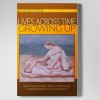My first “Denting” piece looked at the internal ingredients in Steve Jobs that nourished his ingenuity; I focused on his feeling a “chosen” child because of his adoption. Touchingly, one colleague (Dr. Franieck) wrote that the adult Steve, — given away at birth and adopted into a wonderful home — could place the better parts of himself in a multitude of homes (and hands) as an Apple, an iPod, an iPhone, an iPad. Apple “adopters” looked forward enthusiastically to the annual announcements by Jobs of the latest product to enter their homes. Jobs even brought Woody and Buzz Lightyear into the hearts of children (and a few adults) with “Toy Story” as the abandoned characters struggled to find their way back home to their boy, Andy. When we cradle and admire and depend upon the elegantly, zen-simple iPhone, we hold a good, perhaps the better part of Jobs.
Today, I ask what we might learn from what Jobs considered his most important creation: the Apple institution, the people whom he assembled to imagine, then create the future, to put tools in our hands to advance our lives, as he put it. Look at the Apple Jobs built; play with the possibility that we might learn about our psychoanalytic institutions: our institutes, our organizations. How much can we learn from this business about our psychoanalytic enterprise?
This is a stretch, an exercise, for certainly we know that we can’t compare Apples and (psychoanalytic) Oranges. Except insofar as they both can be fruitful.
Listen to some of Jobs’ words, but listen as if we were trying them out for analytic institutions. (all citations from Isaacson’s biography)
“Make something that you believe in…that lasts” (78).
“Products have an essence…a purpose for which they are made… (it) desires to fulfill its essence.” ( 285).
“… progress by eliminating…removing the superfluous.” (445)
“(focus on) what could mess us up” (465)
He even addresses aggression, when he considers Aikido as a model for work: harnessing the other’s aggression in one’s favor, without harming the other (504).
When asked what drove him, he responded: to use his talents to express deep feelings, appreciate the contributions of his precedents and to add to that flow of progress. Reasonable ideas for an analysis even.
Jobs defined Apple, the institution as a setting focused on imagination: nurturing, applying and executing it.
Jobs was also blunt with his staff: he considered them the “A” team players. Anyone who was “B” team could work elsewhere in the Silicon Valley. (Many did.) We can hear this is as elitist or terribly demanding. Yet, if we think of the New York City Ballet, or the Met, or the NY Philharmonic, or Paul Taylor, those of us who enjoy their work expect the finest of performers: we are not likely to refer to the artists as “elitist” nor of the directors as terribly demanding … even though, strictly speaking, they can be seen this way. (And how many of us in NYC would enter a restaurant with a “B” rating for cleanliness?)
The Jobs biography described many employees and former employees who described the mixed sense of working at Apple, working for Jobs: both frightfully exhausting and exhilarating, both the most demanding times of their lives and the most exciting.
Jobs treasured ad writers. Yet, after Jobs once rejected several possible ad campaigns, his writers asked in frustration, “What do you want?” To which Jobs responded that he didn’t know yet, but would know when he saw it.
Jobs told a team of engineers to come up with a design repair within twenty-four hours for a product’s debut; they insist, “Impossible.” Jobs responds, “Possible.” They leave, work through the night, invent a solution, return to his office the next day saying that they still believe that this was impossible, but somehow they did it.
Now, I ask that we listen to this as if we could apply this to our institutions of psychoanalysis. Let’s try this, a form of playing with possibilities in our minds. And, we can also decide that Jobs’ Apple may be good for some psychoanalytic institutions; there are other Silicon Valley companies, or Dells, and Microsofts, IBMs and Toshibas that are run differently, may serve different functions. After all, Apple represents perhaps five percent of the market in computers sold. (But, ironically, Apple pulled in thirty-five percent of computer revenues on their five-percent market: no discounts on Apple.) That is, we can decide on what kind of institution we want to build and inhabit, then do so.
Consider some parallels between Apple and our enterprise, two very different institutions. What can they share?
First, Jobs says Apple predicts the future by inventing it. Psychoanalysis helps the analysand invent a future based on his present and past and restructuring these. This is related to Loewald’s perhaps controversial idea that the analyst has some sense that the analysand’s future can be something better than what is, even if we don’t know the specifics of that future. Or, a related idea from Alfred Flarsheim (an analysand of Winnicott) is the analyst cares perhaps more for the potential within the analysand than for the (suffering) analysand in the present. (One can also care for both.)
Second, and related to the first, is Jobs’ insistence that he didn’t know exactly what would be right, but would know it when he saw it. And he expected his team to come up with the solutions. Jobs was more a conductor rather than a musician: they could make the music; his task was to have a sense of how it should sound, its essence, then how to conduct. So too, we may not know precisely what are the analysand’s solutions or resolutions; we do know when we hear it, as will the analysand. Again, this is closer to Freud’s concept of analyst as midwife.
Third, Jobs’ idea that simplicity is elegant, sublime, sophisticated. Pare away the unnecessary; focus on what matters; eliminate the unimportant. Analytic work is closer to sculpting than to painting (a layering-on): we chip (carefully, so as not to fracture, so as not to hit a vulnerable vein beneath the marble’s surface) chip away, as Michelangelo said, to reveal the sculpture lying within the stone. And, even the discarded chips and dust have value and meaning, as a student explained to me. Here we can think of both consulting room and organization. How often in our offices we listen, and listen again and once more, to know whether, and when and what to say: to select from the myriad of material? For our organization: how can we pare down our identity to simple elegance, focus our efforts, not dissipate our energies?
I continue only with a few more, perhaps more controversial ideas from Apple for psychoanalysis.
Jobs remarked about new products: “(there) falls a shadow between conception and creation.” (p 98). Something is kindled in our offices; then comes the arduous efforts to bring this to creation, to manifest this as a better life. This hies to Freud’s idea that the difference between an idea and a paper is the difference between an affair and a marriage. For the latter, once must work and maintain that work through the fog and shadows that will fall over our efforts.
His idea that products have an essence and a desire to fulfill its essence is perhaps a romantic concept, but one that we can consider for psychoanalytic work. And the idea of the desire to fulfill essence and the shadows that fall are parallel to the concepts that there is a healthy maturational drive in our analysands, and reactions of negativity that will impede our efforts. So too in our organization: we need recognize both an essence of what we are about and to be and the shadowy group processes that impede development.
As for Aikido, not a bad model for handling, refining, redirecting aggression so that it does not harm the analysand and in fact the analysand can harness it to his or her better ends. Aikido also not a bad model for psychoanalytic organizations: rather than directing aggression towards each other, or towards external enemies, find ways to shift it into, let’s say, creative assertion, forcefulness, healthy certitude.
I close with one of Jobs more controversial comments: standing before his employees and calling them the “A” team. This wasn’t empty cant, wasn’t empty boosterism: Jobs was not that. He insisted that Apple make the best possible product, one that would empower humankind. Jobs wasn’t being nice to his team, he was being blunt. He also recognize the greater capacities within his employees than even they knew at the moment: like a coach, he could set goals just above what the athlete feels s/he can perform.
Can we possibly apply this to psychoanalysis? In the office, we expect this of ourselves: we need be the best possible clinician we can be. (That may not be “A” team, but let’s start with this.) Certainly those of us who enter analysis have a right to expect that our analysts will work at their best. Few would elect mediocre analysts. (Those who would should have their heads examined.) Just as it may be unfair that only the finest dancers can join the Balanchine’s ballet company. Dare we apply this to our organization? Can we expect that psychoanalytic organizations are “A” teamers? Do our analysands, our candidates, our society have a right to expect us to be “A” teamers?
This is a charged question, but one that Jobs’ life and creation, Apple, permits us to consider.
I close with an unusual ad for Apple, approved by Jobs, voiced over by Richard Dreyfuss:
“Here’s to the crazy ones, the misfits, the rebels, the troublemakers, the round pegs in square holes, the ones who see things differently. They are not fond of rules.. no respect for status quo. You can quote…disagree..glorify…or vilify them… You can’t ignore them. Because they change things. They push the human race forward.” (italics added).
Early psychoanalysts were rebels (Freud and his sex stuff), troublemakers (not just sex, but parapraxes, even dreams reveal something about ourselves); they saw the world differently. From the beginning until today, analysts have been disagreed with, even vilified (see the NYR Books’ English professor’s screed against Freud). We can change “things,” mostly people’s inner lives for the better. We may even be able in very modest, small ways “push the human race forward,” if we think in the Talmudic sense of saving a single life is saving the world.
But, sadly, in fact we are rather ignored.
If we consider what Jobs truly built, the organization that invented futures, empowered humankind, we may be able to redesign a psychoanalytic organization that is not ignored, that will find and give more meaning to our world.



